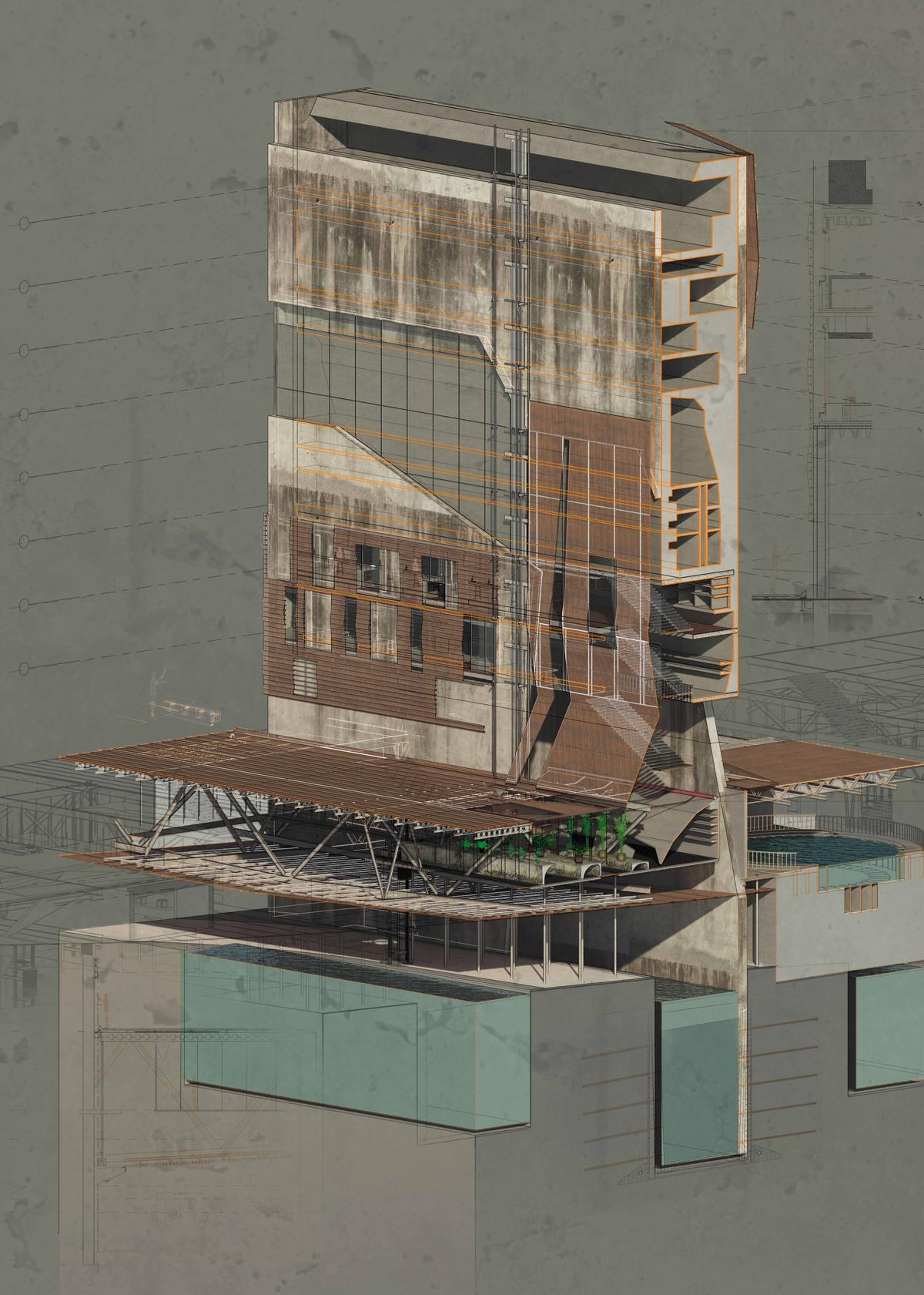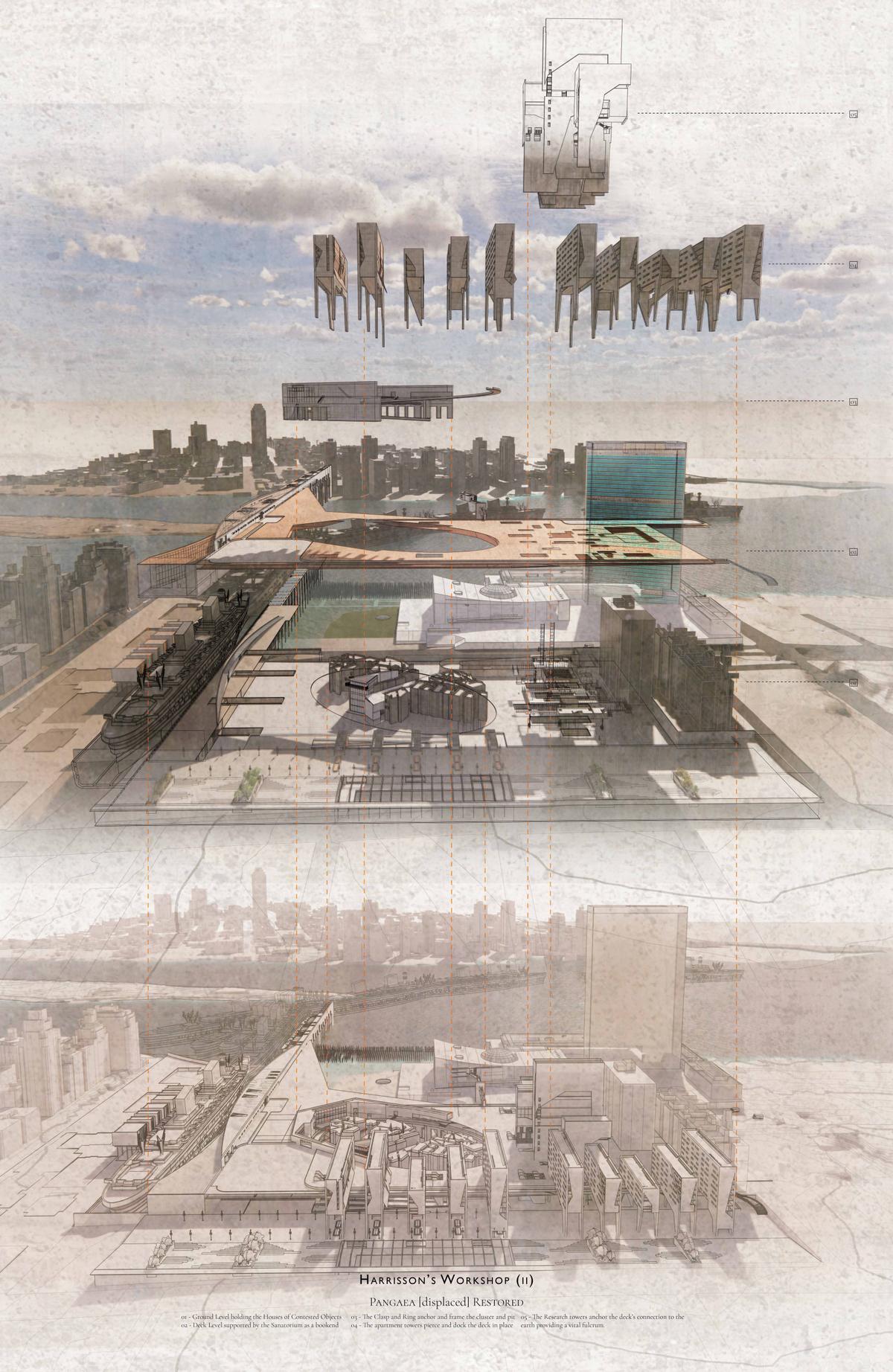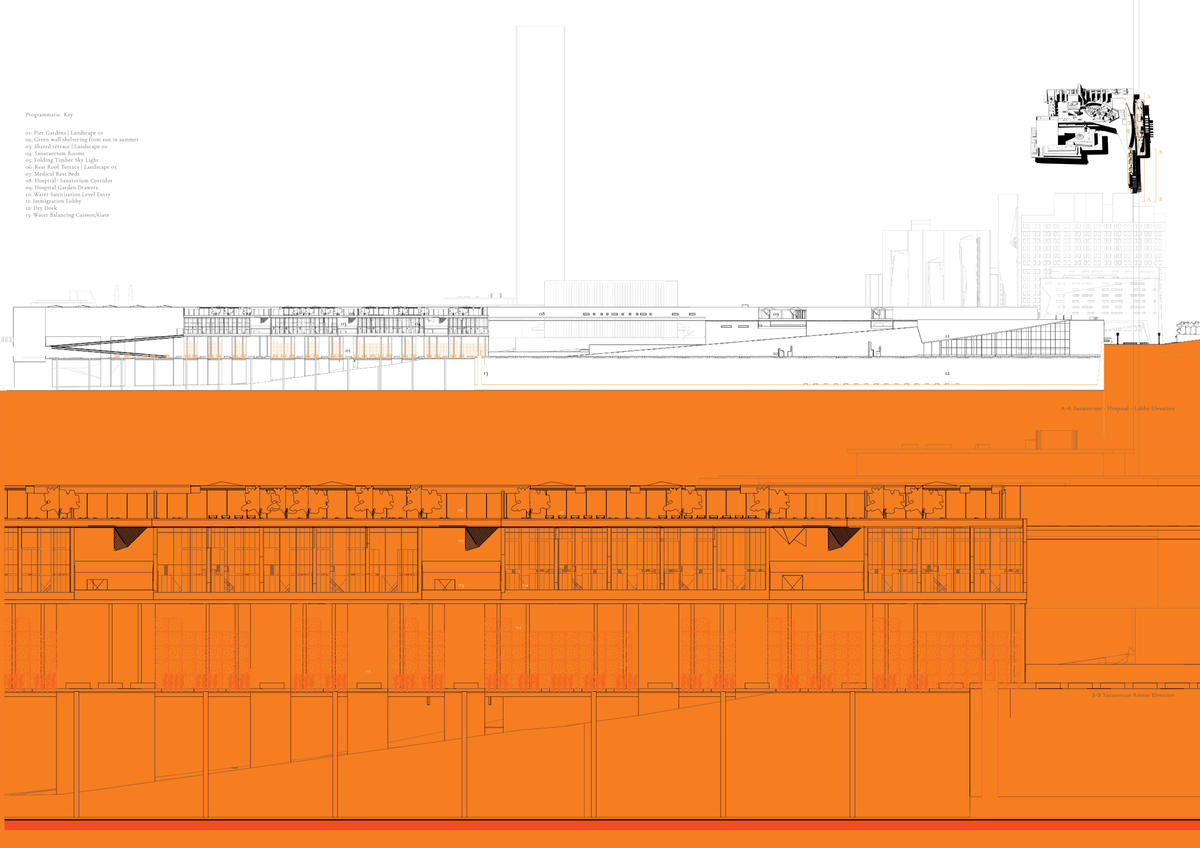Harrisson's Workshop (ii)






Harrisson's workshop | Within the Crust
Harrisson’s workshop (ii) offers back to the United Nations, a landscape of active architectures tasked with engaging the socio-political and environmental crisis situations on earth.
School/Level
Category
- Residential
- Community and Culture
- Industrial and Process
- Urban
- Green Infrastructure
- History and Heritage
Year
Harrison’s Workshop(ii) is a landscape and architectural proposal that seeks to address the intricate political, social and environmental challenges attending upon a turbulent political climate, where the relevance of the United Nations in the 21st century has been called into question.
Named ‘Pangaea’, the last supercontinent, the thesis offers a multifaceted, critical and highly charged neighbour, housing ‘laboratories’ of change beside the existing structures of the UN campus today. In this case, the term ‘laboratories’ refers to more than a scientific research room. Instead, it alludes to a testing ground for social and environmental concerns that lay dormant.
Seen as a second pass to the construction of the UN Headquarters in 1952, Pangaea is a portion of the crust of the earth, elevated from its ground condition, creating a more secure surface for the UN project away from the volatile future swells of the east river. Within it, the crust brings to the geology of Manhattan, the worlds’ forests, rivers, seas and soils, cradling the most precious of laboratories whilst also providing a docking point for more robust integral architectural pieces. This interplay of surface, space and architecture creates a continuous and habitable architectural topography.
These spaces are critical reflections on some of the shortcomings of the UN and the international community, challenging the social and environmental response of architecture operating in tandem with political bodies. The architectural language of unravelling the UN’s ambitions and consequently placing these architectures on exhibition exposes both a strategy for the architectural design but also an intention to stand testament to its absolute requirement in this volatile world.